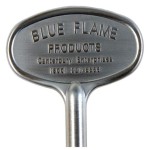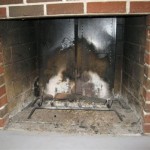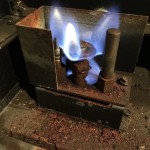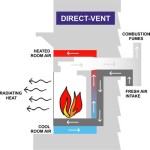Gas Line for Fireplace: A Comprehensive Guide
A gas line for a fireplace provides a safe and efficient way to fuel your fireplace, offering a convenient alternative to traditional wood-burning fireplaces. This article will delve into the essential aspects of a gas line for fireplaces, covering installation, safety considerations, and maintenance tips. Understanding these key components will empower you to make informed decisions regarding your gas fireplace and ensure its optimal performance.
Installation Process: A Detailed Overview
Installing a gas line for a fireplace is a specialized task that should be entrusted to a qualified and licensed plumber or gas fitter. The installation process involves several crucial steps, including:
- Permitting: In most areas, obtaining a permit from local authorities is mandatory before commencing any gas line installation.
- Gas Line Routing: The plumber will determine the optimal route for the gas line from the existing gas supply to the fireplace, considering factors such as accessibility, safety clearances, and aesthetics.
- Pipe Material: The gas line is typically constructed using copper, black iron, or polyethylene (PEX) pipe. The choice of material depends on local codes and the specific installation requirements.
- Gas Line Sizing: The diameter of the gas line must be adequately sized based on the BTU rating of the fireplace. Larger fireplaces require larger gas lines to ensure sufficient gas flow.
- Venting: The gas line must be vented to the exterior of the house to safely exhaust combustion byproducts.
- Gas Valve and Regulator: A gas valve and regulator are essential components that control the gas flow to the fireplace and maintain appropriate pressure levels.
- Testing and Inspection: Upon completion of the installation, the gas line will undergo a thorough pressure test to ensure its integrity and safety.
Safety Measures: Prioritizing Safety
Safety is paramount when dealing with gas lines and fireplaces. Here are some essential safety measures to consider:
- Professional Installation: Never attempt to install a gas line yourself. Hiring a certified and licensed plumber or gas fitter ensures the installation is done correctly and safely.
- Gas Line Inspections: Regular inspections by a qualified professional can help identify potential issues and prevent accidents.
- Clearances and Ventilation: Maintain appropriate clearances between the fireplace and flammable materials, as per manufacturer instructions and local building codes. Ensure proper ventilation to safely exhaust combustion byproducts.
- Gas Leak Detection: Be alert for signs of a gas leak, such as a rotten egg smell, hissing sound, or bubbling in water near the gas line. If you suspect a leak, immediately evacuate the area and contact a gas professional.
- Fireplace Maintenance: Regularly clean and maintain the fireplace, including the burner and pilot light, to prevent malfunctions and ensure efficient operation.
Maintenance and Troubleshooting: Ensuring Long-Term Performance
Proper maintenance is essential for the longevity and performance of your gas fireplace and gas line. Here are some key maintenance tips:
- Annual Inspections: Schedule annual inspections by a qualified gas professional to ensure the gas line, fireplace, and vent system are functioning correctly and safely.
- Regular Cleaning: Clean the fireplace burner, pilot light, and glass doors regularly to prevent soot buildup and ensure efficient combustion.
- Gas Line Check: Regularly inspect the gas line for signs of damage, corrosion, or leaks. Address any issues promptly.
- Gas Valve Maintenance: Clean and lubricate the gas valve to ensure proper operation and prevent malfunctions.
- Troubleshooting Common Issues: Address common issues such as pilot light problems, flame problems, or gas valve failures by first consulting the fireplace manufacturer's instructions or contacting a qualified gas professional.
Investing in a gas line for your fireplace can provide numerous benefits, including convenience, efficiency, and safety. By understanding the installation process, safety considerations, and maintenance practices outlined in this article, you can ensure the optimal performance and longevity of your gas fireplace system.

Lp Gas Line Clearance Plumbing Inspections Internachi Forum

Gas Fireplace Easy Install How To Run Your Line

Fireplace Installation Instructions Diamond Fire Glass

Flexible Appliance Connector In Fireplace Plumbing Inspections Internachi Forum

How To Install A Log Lighter Fireplace Gas Starter Pipe

Remove A Gas Fireplace Merrypad
.png?strip=all)
How To Install A Log Lighter Fireplace Gas Starter Pipe

Remove A Gas Fireplace Merrypad

Hire A Certified Chimney Professional To Install Your Heating Appliance

Fireplace With Old Gas Line Floor Heating Convert Installed House Remodeling Decorating Construction Energy Use Kitchen Bathroom Bedroom Building Rooms City Data Forum
Related Posts








